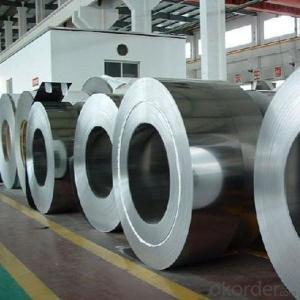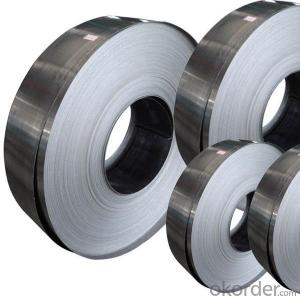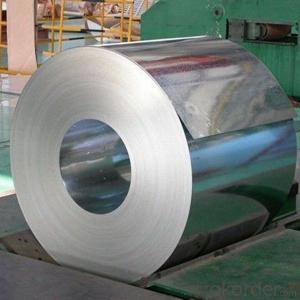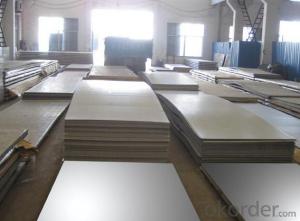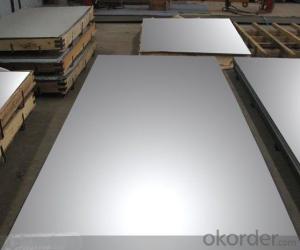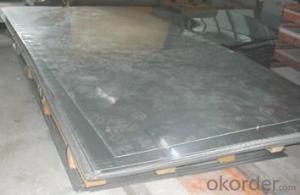Stainless Steel Plates Stainless Steel Strips Grade 304 NO.1 Finish from China
- Loading Port:
- Tianjin
- Payment Terms:
- TT or LC
- Min Order Qty:
- 20 m.t.
- Supply Capability:
- 20000 m.t./month
OKorder Service Pledge
OKorder Financial Service
You Might Also Like
Item specifice
Stainless Steel Sheets,Stainless Steel Plates,Stainless Steel Strips,Stainless Steel Grade 304 NO.1 Finish from China
Product | stainless steel coils/plates/sheets | ||
Size | Coils | Cold Rolled: | Thickness0.3-8mm,Width:280-2100mm |
Hot Rolled : | Thickness3-14mm,Width:650-2100mm | ||
Plates | Thickness2-80mm,Width:1500-3000mm | ||
Coil Weight | About 20 Tons | ||
Grade | 201,202,304/304L/304H,316/316L/316H,321/H,310S,409/L,430 etc. | ||
Technique | Hot Rolled/Cold Rolled | ||
Finish | 2B, BA, 2D, No1, No2, No4,NO.8,SB etc | ||
Edge | Mill Edge / Slitting Edge | ||
Package | In bundles, or as customer's requirement | ||
Detail picture of Products:
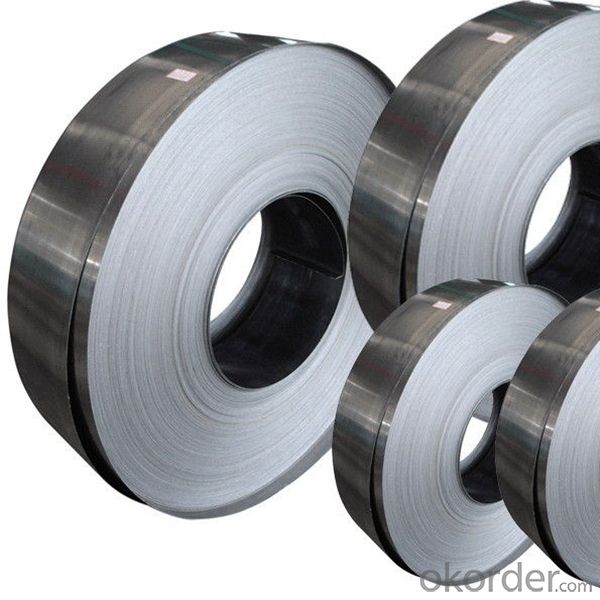

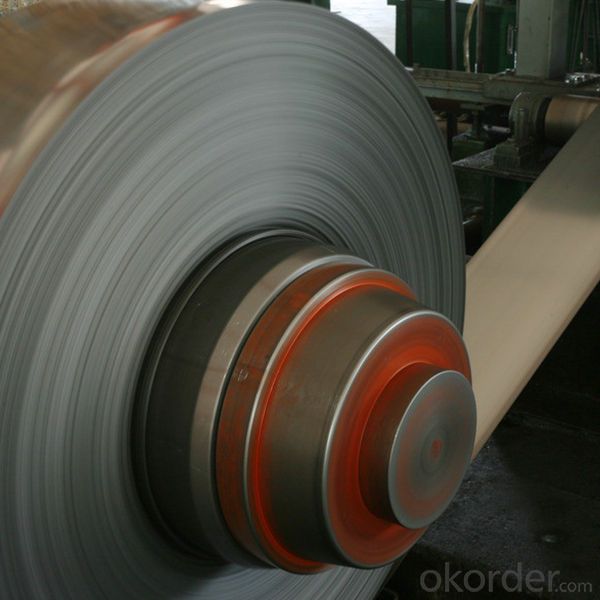
Application
Boiler heat exchanger, machinery and petroleum, chemical industries, hardware fields, Food industry, construction material, kitchen utensils, building construction, medical equipment, chemical tank, pipe etc

Packaging & Delivery
Packaging Detail Standard export packing or following customer's demand
Delivery Time: Within 15-20 days after deposit or according to the order quantity
- Q:304 why is stainless steel magnetic?
- Some people often think that the inspection of stainless steel with good or bad, using a magnet, magnet does not smoke, no magnetic, genuine; smoke, then there is magnetism, is considered a fake fake. In fact, this is an extremely one-sided and unrealistic method of discrimination.Generally speaking, stainless steel has magnetism and also has no magnetism. The austenite is nonmagnetic or weakly magnetic, such as 201, 202, 304, 316, etc. the martensite or ferrite is magnetic, such as 430, 420, 410, etc..
- Q:Are stainless steel sheets suitable for architectural facades?
- Architectural facades can greatly benefit from the use of stainless steel sheets. Not only are they highly suitable, but they also offer numerous advantages in terms of their aesthetic appeal, durability, and sustainability. Firstly, stainless steel sheets possess an inherent visual appeal that can greatly enhance the overall look of any building. With its sleek and modern appearance, stainless steel can effortlessly elevate the design aesthetic. Furthermore, architects have the freedom to choose from a variety of finishes such as brushed, mirrored, or patterned, allowing them to achieve their desired look and feel. Moreover, stainless steel is highly resistant to corrosion, making it an ideal choice for outdoor applications. It can withstand exposure to harsh weather conditions, pollution, and other environmental factors without deteriorating. This remarkable resistance to corrosion also means that stainless steel requires minimal maintenance, resulting in reduced long-term costs and efforts associated with facade upkeep. In terms of strength and durability, stainless steel sheets excel. They can withstand impact, making them suitable for high-traffic areas or buildings located in regions prone to severe weather events. Additionally, stainless steel is resistant to staining, scratching, and fading, ensuring that the facade remains attractive and intact for an extended period. Sustainability is another significant advantage of stainless steel sheets for architectural facades. As a 100% recyclable material, stainless steel can be reused without losing its properties, making it an environmentally friendly option. Furthermore, its longevity significantly reduces the need for frequent replacements, further contributing to sustainability efforts. In conclusion, stainless steel sheets are an excellent choice for architectural facades due to their aesthetic appeal, corrosion resistance, strength, durability, and sustainability. Regardless of whether they are used in modern or traditional designs, stainless steel can provide a long-lasting and visually pleasing solution for enhancing the exterior of buildings.
- Q:Can stainless steel sheets be used in high-pressure applications?
- Yes, stainless steel sheets can be used in high-pressure applications. Stainless steel is known for its excellent corrosion resistance and high strength, making it suitable for various industrial applications including high-pressure environments. The high strength of stainless steel allows it to withstand the force exerted by high-pressure fluids or gases without deforming or failing. Additionally, stainless steel sheets can be fabricated into different shapes and sizes, enabling their use in a wide range of high-pressure applications such as pressure vessels, pipelines, hydraulic systems, and heat exchangers. Overall, stainless steel sheets are a reliable and durable choice for high-pressure applications due to their inherent strength and corrosion resistance properties.
- Q:Can stainless steel sheets be used for cladding?
- Indeed, cladding can utilize stainless steel sheets. The preference for stainless steel as a cladding material stems from its robustness, ability to withstand corrosion, and visual allure. It is frequently employed in the external cladding of structures, including facades, canopies, and curtain walls. Stainless steel sheets provide an elegant and contemporary look while furnishing defense against severe environmental circumstances. Furthermore, stainless steel cladding necessitates minimal upkeep, boasts an extended lifespan, and can be effortlessly cleaned, rendering it a pragmatic selection for both residential and commercial purposes.
- Q:How do you prevent pitting on stainless steel sheets?
- To prevent pitting on stainless steel sheets, there are several steps you can take: 1. Ensure proper cleaning and maintenance: It is important to regularly clean the stainless steel sheets using mild soap or a non-abrasive cleaning solution. Avoid using harsh chemicals, bleach, or abrasive cleaners as they can harm the protective layer on the surface. After cleaning, make sure to thoroughly rinse and dry the sheets to eliminate any residue that could lead to pitting. 2. Avoid contact with corrosive substances: Although stainless steel is highly resistant to corrosion, prolonged exposure to certain chemicals or substances can still cause pitting. It is advisable to avoid contact with chloride-based cleaners, strong acids, or solutions containing high concentrations of salt. If accidental contact occurs, immediately rinse the sheets with clean water and dry them thoroughly. 3. Protect against physical damage: Pitting can occur on stainless steel sheets if they get scratched or damaged. It is crucial to handle and install the sheets with care to prevent any sharp or abrasive objects from scratching the surface. During transportation and storage, consider using protective films or covers to minimize the risk of physical damage. 4. Apply a protective coating: To enhance the natural corrosion resistance of stainless steel and reduce the risk of pitting, you may want to consider applying a protective coating or passivating treatment to the sheets. It is recommended to consult with a professional or supplier to determine the most suitable coating or treatment for your specific stainless steel grade and application. 5. Conduct regular inspection and maintenance: It is important to periodically inspect the stainless steel sheets for any signs of pitting or corrosion. Promptly address any issues by cleaning, repairing, or replacing the affected areas. Regular maintenance and inspection will help identify potential problems early on and prevent them from worsening. By following these preventive measures, you can minimize the occurrence of pitting on stainless steel sheets, extend their lifespan, and maintain their aesthetic appeal.
- Q:How do I determine the flatness of stainless steel sheets?
- To determine the flatness of stainless steel sheets, you can use various methods such as visual inspection, measuring with a straight edge or ruler, or utilizing specialized tools like a flatness gauge or a laser level. Visual inspection involves observing the surface for any visible curvature or warping. Measuring with a straight edge or ruler can help identify any gaps or deviations from a flat surface. Specialized tools like a flatness gauge or a laser level provide more precise measurements by quantifying the degree of flatness.
- Q:What are the common uses of stainless steel sheets in the automotive industry?
- Stainless steel sheets are commonly used in the automotive industry for various purposes such as manufacturing body panels, exhaust systems, fuel tanks, and decorative trim. The corrosion-resistant properties of stainless steel make it an ideal material for these applications, providing durability and aesthetic appeal to vehicles.
- Q:Are stainless steel sheets good for pressure piping?
- Indeed, pressure piping benefits greatly from the utilization of stainless steel sheets. Possessing remarkable strength and durability, stainless steel is capable of enduring elevated pressure levels without succumbing to deformation or fracturing. Moreover, this material exhibits exceptional resistance to corrosion, rendering it highly suitable for the conveyance of pressurized fluids or gases in piping systems. Additionally, the ease with which stainless steel sheets can be cleaned and maintained further solidifies their reliability in diverse industries, including oil and gas, chemical, and food processing, where pressure piping applications are prevalent.
- Q:Are stainless steel sheets available in different patterns?
- Yes, stainless steel sheets are available in different patterns.
- Q:How do I prevent fretting corrosion on stainless steel sheets?
- To prevent fretting corrosion on stainless steel sheets, there are several preventive measures that can be taken: 1. It is crucial to handle stainless steel sheets properly, avoiding any scratching or rubbing of the surface that could lead to fretting corrosion. Gloves should be worn and contact with other metals or rough surfaces should be avoided. 2. Regular cleaning of the stainless steel sheets using mild detergents or specialized stainless steel cleaners is recommended. This helps to remove contaminants that can initiate corrosion and prevents the build-up of dirt or grime that can contribute to fretting corrosion. 3. Applying a suitable lubricant or anti-seize compound on the contact surfaces can minimize friction and prevent fretting corrosion, especially in applications with repeated movement or vibration. 4. Whenever possible, it is advised to isolate stainless steel sheets from direct contact with other metals. This can be achieved by using insulating materials, gaskets, or non-metallic spacers to create a barrier between the stainless steel and potentially corrosive materials. 5. Regular inspection of the stainless steel sheets is important to detect any signs of fretting corrosion, such as small cracks, discoloration, or pitting. Early detection allows for prompt action to prevent further damage. 6. Applying a protective coating, such as a passivation treatment or a corrosion-resistant paint, can provide an additional layer of protection against fretting corrosion. It is recommended to consult with a professional to determine the most suitable coating for the specific application. 7. Proper storage of stainless steel sheets is essential. When not in use, they should be stored in a clean, dry environment to minimize exposure to moisture or corrosive substances. The storage area should be well-ventilated and free from any contaminants that could potentially initiate fretting corrosion. By following these preventive measures, the risk of fretting corrosion on stainless steel sheets can be significantly reduced, ultimately prolonging their lifespan.
1. Manufacturer Overview |
|
|---|---|
| Location | |
| Year Established | |
| Annual Output Value | |
| Main Markets | |
| Company Certifications | |
2. Manufacturer Certificates |
|
|---|---|
| a) Certification Name | |
| Range | |
| Reference | |
| Validity Period | |
3. Manufacturer Capability |
|
|---|---|
| a)Trade Capacity | |
| Nearest Port | |
| Export Percentage | |
| No.of Employees in Trade Department | |
| Language Spoken: | |
| b)Factory Information | |
| Factory Size: | |
| No. of Production Lines | |
| Contract Manufacturing | |
| Product Price Range | |
Send your message to us
Stainless Steel Plates Stainless Steel Strips Grade 304 NO.1 Finish from China
- Loading Port:
- Tianjin
- Payment Terms:
- TT or LC
- Min Order Qty:
- 20 m.t.
- Supply Capability:
- 20000 m.t./month
OKorder Service Pledge
OKorder Financial Service
Similar products
New products
Hot products
Hot Searches
Related keywords


